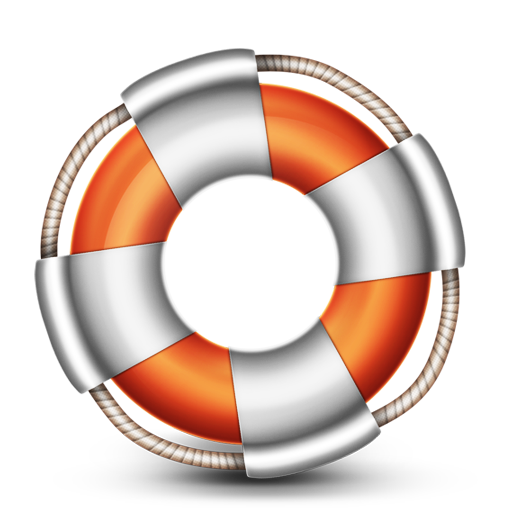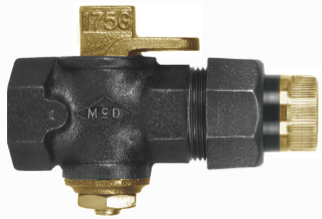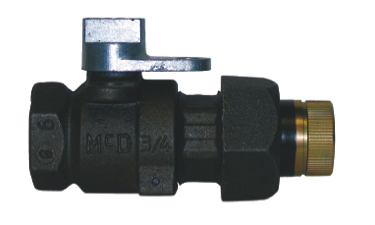How We Get That Gas Tight Seal

How We Get That Gas Tight Seal
Without gas valves, the natural gas distribution process wouldn’t be as efficient and safe as it is today. In addition to controlling gas flow within a structure, these lifesavers are also considered the primary shut off for meter service, which is largely due to their gas tight seal.
There are two common gas valve types – ball and plug. At A.Y. McDonald, both are made of an iron body with brass components while being designed and tested to comply with ANSI/ASME B16.33 American National Standard for Manually Operated Metallic Gas Valves for use in Gas Piping Systems up to 175 PSIG.
Plug Valve

Ball Valve

While the two gas valve types both were created for the same PSIG, temperature range, and rotation range, they differ when it comes to their source of seal. For the plug valve, grease is the main component as it’s used to occupy/fill the small space/void that is between the brass plug and the body of the valve. Should additional grease be required to maintain the seal, the plug valves are designed so that they can be re-lubricated. Due to this fact, the plug valve is often referred to as a maintenance valve. The ball valve prevents leakage to the atmosphere or through the valve by way of port seals. The brass ball rides between two PTFE port seals for its leak protection and does not require lubrication.
Properly maintaining a gas valve can ensure that it lives up to its highest potential. Continue reading to learn more about the maintenance required in order to guarantee the great sealing component these gas parts are known for.
Purging
In relation to the high pressure gas industry, ‘purging’ is an act of protecting your service line and lubricated plug valve or ball valve from air pockets and any potential debris or contaminants. This is done before service is turned on, as the presence of any unwanted debris or contaminants could damage the regulator and even the meter.
Improper purging of the gas line can mean that, in addition to damaging the regulator and/or meter, you can also end up damaging the gas valve. For example, with the ball design, this can damage the PTFE port seals, which can cause a leak and may require replacement. With the plug design, this risks blowing nearly all the grease out, meaning a need for re-lubrication.
A.Y. McDonald highly recommends an expert to perform the purging if that’s the route you’ve decided to take. Get a break down on how to purge properly by viewing the video below.
Re-lubrication
As previously mentioned, re-lubrication may be required for plug valves that leak through in the closed position. This could be the result of the grease being wiped away or drying up. Causes of this can be due to the age of the valve (20-30 years), having been cycled multiple times, or through the use of purging (as noted above) the service line. In the event that a valve does need to be re-lubricated, A.Y. McDonald carries re-lube tools and cartridges so customers can always be prepared while in the field. Learn more about the process and get step-by-step instructions by viewing the video below.
It is no secret that the success of the high pressure gas industry greatly depends on the safety and security of providing natural gas to a structure. This is why gas valves are so essential to the process. While no one type of valve is better than the other, they are only as effective as the utility maintaining their gas tight seal. Responsible for making gas work for you and your community, A.Y. McDonald is devoted to helping you understand and make the most of your gas valves!
Test your knowledge by taking the the 'Maintenance vs. Non-Maintenance Gas Valves' AYU course.
